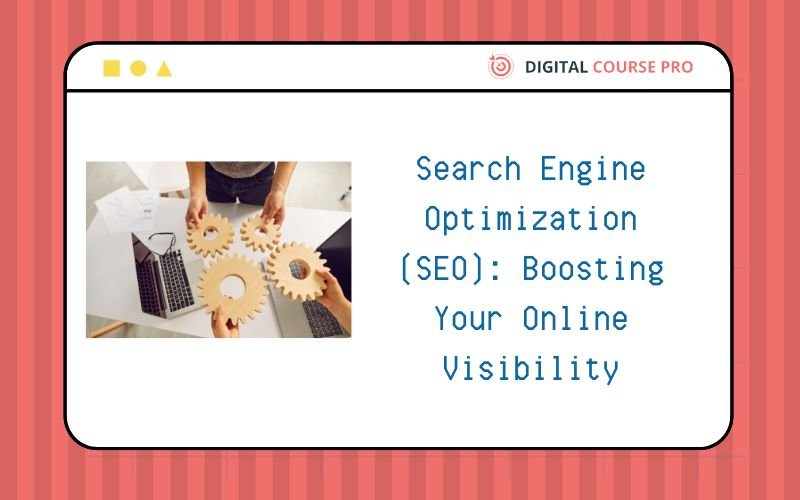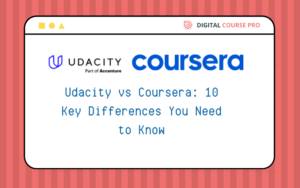Search Engine Optimization (SEO): Boosting Your Online Visibility is a crucial component of the “10 Steps to Mastering Simply Passive Digital Marketing Course.” This module delves deep into the strategies and techniques necessary to enhance your website’s visibility in search engine results. Whether you’re a seasoned marketer looking to refine your SEO tactics or a newcomer eager to understand its importance, this course offers a comprehensive guide to optimizing your online presence. Learn how to effectively use keywords, improve website ranking, and implement SEO best practices to drive organic traffic. Explore our detailed page to start mastering SEO and increase your online visibility today.
Understanding SEO Basics and Boosting Your Online Visibility
- How Search Engines Work:
Search engines like Google use algorithms to crawl (discover), index (store), and rank web pages based on relevance and authority to provide the most relevant results for user queries. Understanding search engine behavior helps optimize your website to improve visibility in search engine results pages (SERPs). - Importance of Organic Search Results:
Organic search results refer to unpaid listings displayed in search engine results pages based on relevance to the user’s query. Unlike paid advertisements, organic search results are perceived as more credible and trustworthy by users, leading to higher click-through rates (CTR) and potential conversions.
Keyword Research
- Identifying Target Keywords:
Keyword research involves identifying relevant search terms and phrases that your target audience uses to find information related to your products, services, or industry. Use tools like Google Keyword Planner, SEMrush, Ahrefs, and Ubersuggest to discover keywords with high search volume, low competition, and relevance to your business. - Long-Tail Keywords:
Long-tail keywords are specific phrases that typically have lower search volume but higher conversion rates due to their specificity. Targeting long-tail keywords helps attract qualified traffic and improve the likelihood of conversion. - Competitor Analysis:
Analyze competitor websites and content to identify keywords they are ranking for and opportunities to differentiate your SEO strategy. Tools like SEMrush and Ahrefs provide insights into competitor keywords, backlinks, and content performance.
On-Page SEO
- Meta Tags and Descriptions:
Optimize meta tags (title tag and meta description) to accurately describe each web page’s content and include target keywords. Meta tags appear in search engine results and influence click-through rates (CTR) and organic rankings. - Header Tags (H1, H2, H3):
Use header tags to structure content logically and highlight key topics and sections. Incorporate relevant keywords in header tags to improve readability and SEO. - Keyword Placement and Density:
Strategically place target keywords throughout the content, including in the introduction, headings, subheadings, and naturally within the body text. Avoid keyword stuffing, as it can negatively impact readability and SEO.
Technical SEO for Boosting Your Online Visibility
- Site Speed Optimization:
Improve site speed by optimizing images, leveraging browser caching, reducing server response time, and using content delivery networks (CDNs). Fast-loading websites provide better user experience and are favored by search engines. - Mobile-Friendliness:
Ensure your website is responsive and mobile-friendly to provide a seamless experience across devices. Google’s mobile-first indexing prioritizes mobile-friendly websites in search results, affecting rankings on both desktop and mobile devices. - XML Sitemaps:
Create and submit XML sitemaps to search engines to help them crawl and index your website’s pages more efficiently. XML sitemaps list all important pages of your site, including metadata like last modified date and priority.
Content Optimization
- Creating High-Quality Content:
Produce informative, valuable, and relevant content that addresses user queries and satisfies search intent. Focus on creating original content that provides unique insights, solves problems, or answers questions related to your niche. - SEO Content Best Practices:
Optimize content by incorporating target keywords naturally, using related keywords and synonyms, and organizing content into well-structured sections with clear headings and subheadings. Aim for comprehensive coverage of topics to increase relevance and authority.
Link Building Strategies
- Importance of Backlinks:
Backlinks are links from other websites to your site and are a crucial ranking factor in SEO. High-quality backlinks from authoritative and relevant websites signal trust and authority to search engines, improving your site’s rankings. - Effective Link Building Techniques:
Earn backlinks through content creation, guest blogging, influencer outreach, and partnerships with industry associations or local businesses. Focus on acquiring natural, relevant, and editorially given backlinks to enhance your site’s authority and credibility.
Local SEO
- Optimizing for Local Search Results:
Local SEO aims to improve visibility for location-based searches, such as “near me” queries, to attract nearby customers. Optimize your Google My Business profile, create local content, and obtain local citations (mentions of your business name, address, and phone number) to enhance local search rankings. - Local Keyword Targeting:
Target geo-specific keywords that include location modifiers (city, state, neighborhood) relevant to your business. Use local schema markup to provide search engines with structured data about your business’s location, opening hours, reviews, and contact information.
Monitoring and Analytics
- Implementing SEO Tools:
Use tools like Google Analytics, Google Search Console, SEMrush, and Ahrefs to monitor SEO performance, track keyword rankings, analyze traffic sources, and identify opportunities for improvement. Set up custom reports and dashboards to visualize key metrics and monitor progress over time. - Data-Driven Optimization:
Analyze SEO metrics such as organic traffic, bounce rate, average session duration, and conversion rates to make data-driven decisions. Identify trends, gaps, and areas for optimization to refine your SEO strategy and achieve better results.
By mastering these fundamental aspects of SEO, businesses can enhance their online visibility, attract targeted traffic, and achieve sustainable growth through organic search engine rankings.





